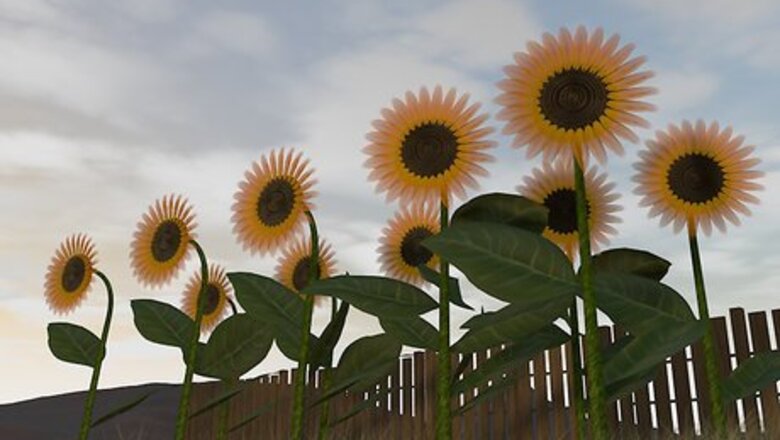
views
Drying on the Stem
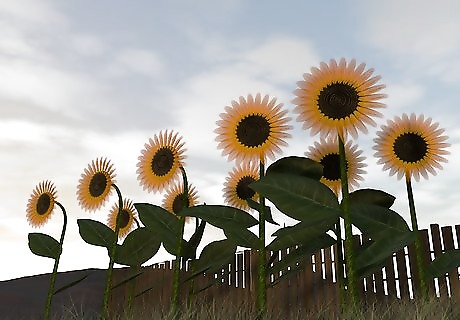
Wait until the sunflower begins to wilt. Sunflowers are ready to harvest once the heads become brown. If you have a particularly wet season however, they can go mouldy [if this is the case you will need to cut off the head once the back of it is yellowing and allow the drying process to continue in a greenhouse or shed]. You should prepare them for the drying process once the back of the head begins to turn yellow to yellow-brown. In order to harvest the seeds, the sunflower head must be completely dry. Otherwise, the flower will not surrender the seeds. A sunflower will reach this state naturally after a few days of beginning to wilt. It is easier to dry sunflowers on the stem if you have dry, sunny weather. If you live in a moist climate, you may want to consider drying them off the stem, instead. At least half of the yellow petals should have dropped before you start preparing the sunflower for harvest. The head of the flower should also begin to droop. It may look dead, but if it still has its seeds, then the sunflower is drying out in a healthy manner. Examine the seeds. Even if they are still stuck on the flower head, they should begin to plump up. The seeds should also be hard and may have their trademark black-and-white striped shell, or purely black, depending on the type of sunflower.
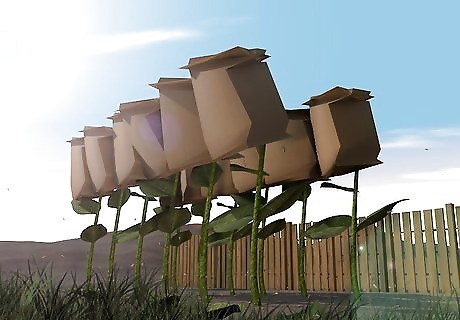
Tie a paper bag over the head. Cover the head of the flower with a paper bag, tying the bag on loosely with twine or yarn to prevent it from being knocked off. You could also use cheesecloth or similarly breathable fabric, but you should never use a plastic bag. Plastic will restrict the air flow, causing moisture to build up on the seeds. If too much moisture builds up, the seeds may turn rotted or moldy. Tying a bag over the head prevents birds, squirrels, and most other wildlife from sneaking in and "harvesting" your sunflower seeds before you do. It also prevents the seeds from dropping to the ground and being lost.
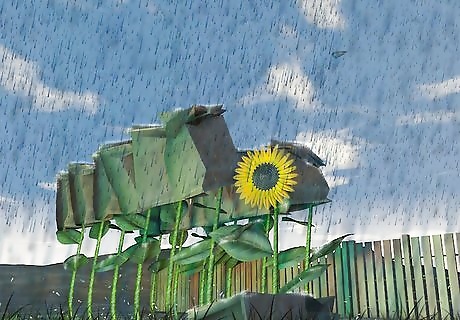
Change the bag as needed. If the bag gets wet or torn, carefully remove it and replace it with a fresh, intact paper bag. You may be able to prevent the bag from getting wet during a rainstorm by temporarily placing a plastic bag over it. Do not tie the plastic bag onto the flower head, though, and remove it as soon as the rain lets up to prevent mold from setting in. Change the paper bag as soon as it gets wet. A wet paper bag is more likely to be torn, and mold may even develop on the seeds if they sit in a wet bag for an extended period of time. Collect any seeds that may have dropped off into the old bag when changing it out. Examine the seeds for signs of possible damage, and if they are in good shape, store them in airtight containers until you are ready to harvest the remaining seeds.
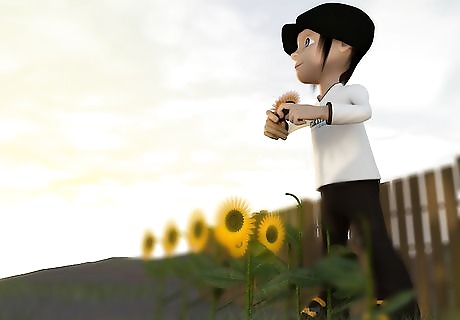
Cut off the heads. Once the back of the flower heads turn brown, cut them off and prepare to harvest the seeds. Leave roughly 1 ft (30.5 cm) of stem attached to the flower head. Make sure that the paper bag is still securely tied onto the flower head. If it slips off as you remove and transport the sunflower head, you may lose a significant number of seeds.
Drying off the Stem
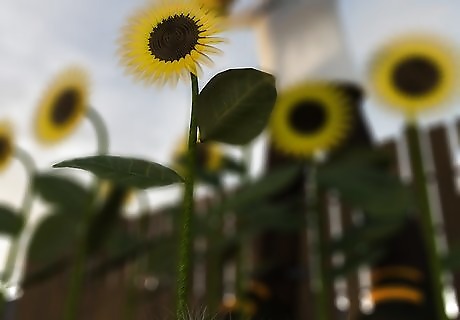
Prepare yellowed sunflowers for drying. Sunflowers are ready to be dried once the back of the head begins to turn a deep yellow to yellow-brown. The sunflower head must be dried before you collect the seeds. Sunflower seeds are easy to remove when dry, but nearly impossible to remove when still moist. Most of the yellow petals should have dropped off by this point, and the head may begin to droop or wilt. The seeds should feel hard when tapped and should also have a black-and-white striped appearance, or perhaps all black, depending on the type of sunflower.
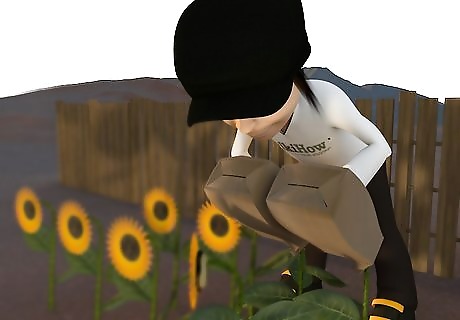
Cover the head with a paper bag. Secure a brown paper bag over the head of the sunflower using twine, yarn, or string. Do not use a plastic bag. Plastic will not allow the flower head to "breathe," so moisture may build up inside the bag in excess. If this happens, the seeds could rot or develop mold, making them unfit for consumption. If you do not have brown paper bags, you could use a cheesecloth or other similarly breathable fabric. By drying the sunflower off the stem, you do not need to worry about animals eating the seeds before you can get to them. You still need to place the bag over the sunflower head for the sake of collecting loose seeds, though.
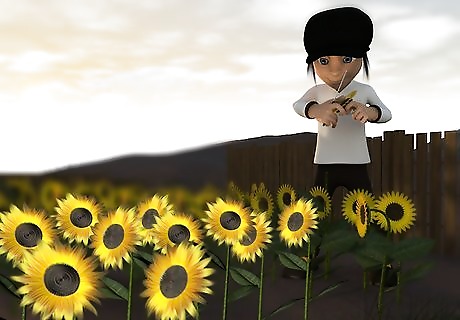
Cut off the head. Remove the head of the sunflower using a sharp knife or shears. Leave roughly 1 ft (30.5 cm) of stem attached to the head. Work carefully so that you do not knock the paper bag from the head as you remove it.
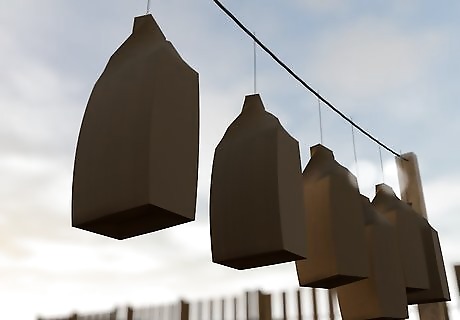
Hang the head upside-down. Let the sunflower head continue drying in a warm location. Hang the sunflower by tying a piece of twine, yarn, or string to the base of the head and attaching the other end of the twine to a hook, rod, or hanger. The sunflower should dry stem-side up and head-side down. Dry the sunflower in a warm, dry location indoors. The area should have good ventilation to prevent moisture from building up. You should also hang the sunflower head high above the ground or floor to prevent rodents from nibbling at them.

Check the sunflower head periodically. Carefully open the bag on a daily basis. Empty the contents of the bag to collect any seeds that fall off early. Store these seeds in an airtight container until the remainder are ready to harvest.
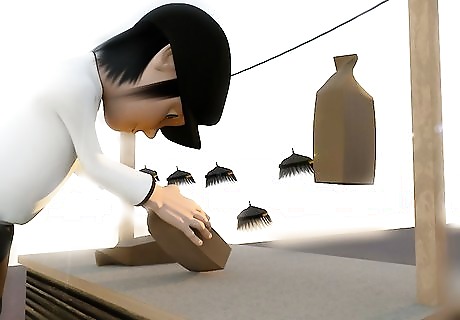
Remove the bag after the head finishes drying. The sunflower seeds are ready to harvest once the back of the head turns dark brown and very dry. The drying process takes an average of one to four days, but it may take a little longer depending on how early you harvest the flower head and the conditions in which the flower dries. Do not remove the bag until you are prepared to harvest the seeds. Otherwise, you may drop and lose many of the seeds.
Harvesting and Storing the Seeds
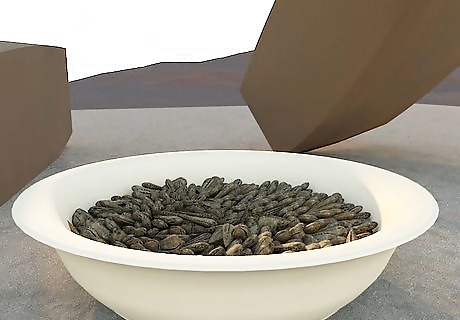
Place the sunflower on a flat, clean surface. Move the sunflower head to a table, counter, or other work surface before removing the paper bag. Empty the contents of the bag. If there are seeds inside the bag, transfer them to a bowl or storage container.
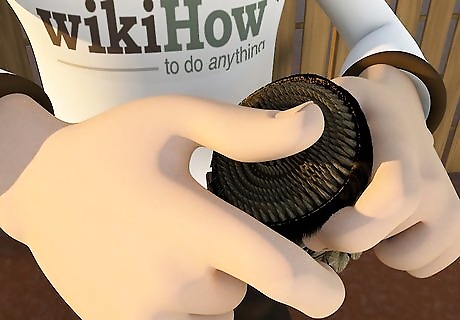
Rub your hand across the seeded area of the sunflower. To remove the seeds, simply brush them with your hands or a stiff vegetable brush. If harvesting seeds from more than one sunflower, you can remove the seeds by gently rubbing two flower heads together. Continue rubbing the flower heads until all the seeds are dislodged.
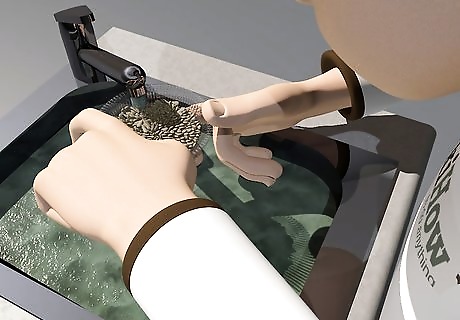
Rinse the seeds. Transfer the collected seeds to a colander and rinse them thoroughly with cold, running water. Allow the seeds to drain completely before removing them from the colander. Rinsing the seeds removes most of the dirt and bacteria that may have gathered on the seeds while they were outdoors.
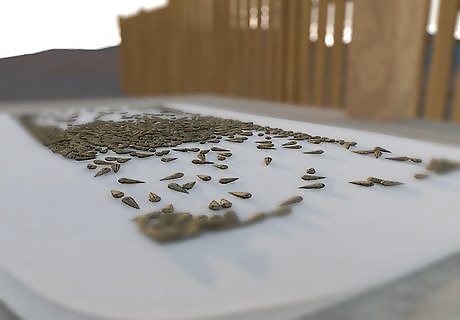
Dry the seeds. Spread the seeds out on a thick towel in a single layer and let them dry for several hours. You could also dry the seeds on multiple layers of paper towel instead of a single thick towel. Either way, they should be flat and in a single layer so that each seed can dry completely. As you spread the seeds out, you should remove any debris or other foreign matter you notice. You should also remove any damaged seeds. Make sure that the seeds are completely dry before proceeding to the next step.
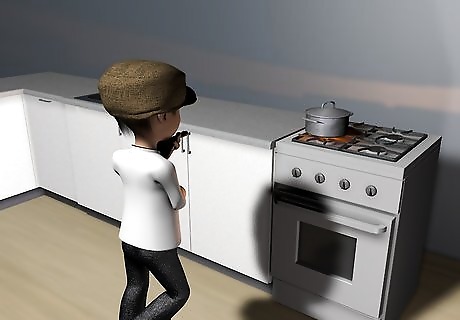
Salt and roast the seeds, if desired. If you plan to consume the seeds soon, you can salt and roast them now. Soak the seeds overnight in a solution made from 2 quarts (2 liters) of water and 1/4 to 1/2 cup (60 to 125 ml) salt. Alternatively, you could also boil the seeds in this salt water solution for two hours instead of soaking them overnight. Drain the seeds on dry, absorbent paper towel. Spread the seeds out in a single layer on a shallow baking sheet. Roast for 30 to 40 minutes, or until golden brown, at an oven temperature of 300 degrees Fahrenheit (149 degrees Celsius). Stir the seeds occasionally as they roast. Let cool completely.
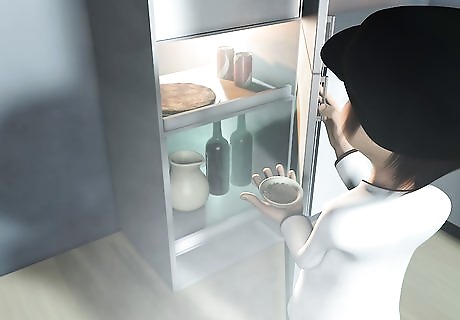
Store the seeds in an airtight container. Transfer the seeds, roasted or unroasted, to an airtight container and store in the refrigerator or freezer. Roasted seeds are best stored in the refrigerator and may be kept for several weeks. Unroasted seeds can be kept for several months inside the refrigerator or freezer and last longest inside the freezer.















Comments
0 comment